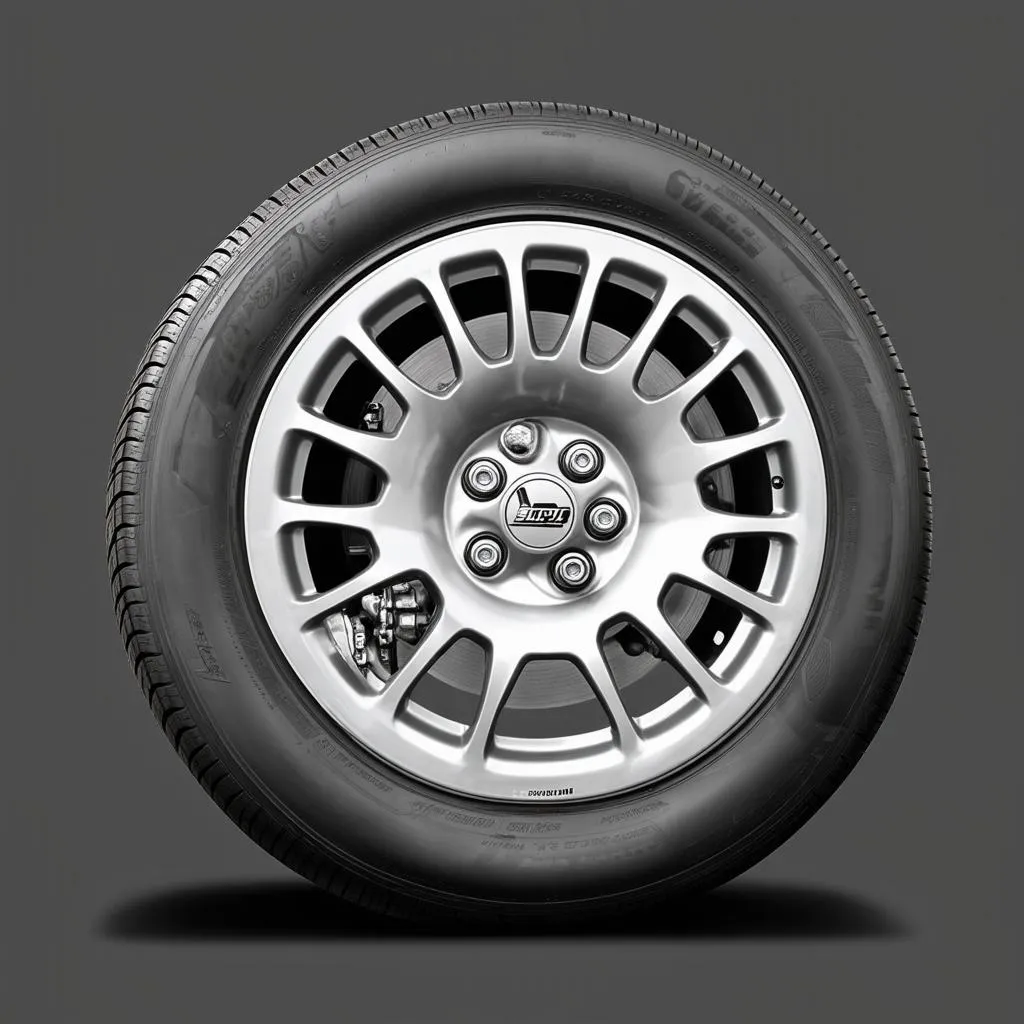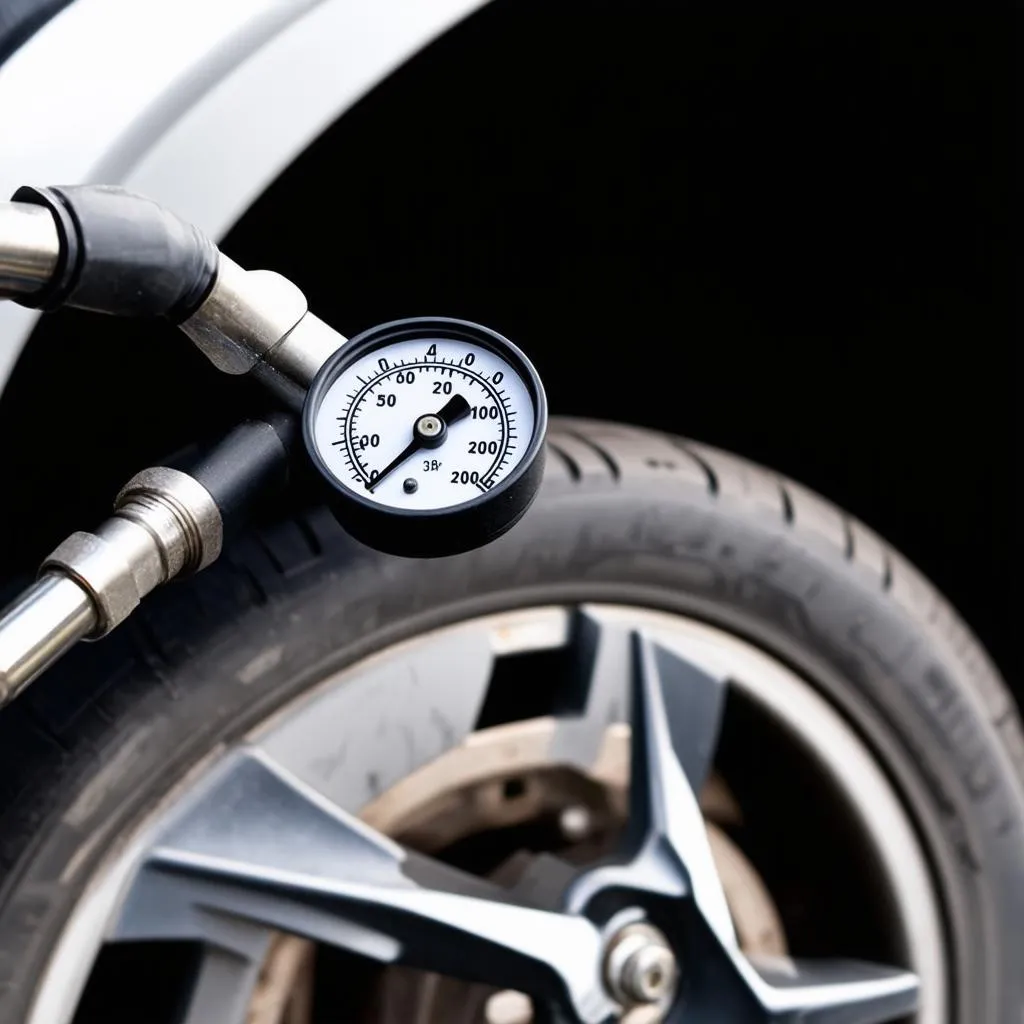Picture this: you’re cruising down the Pacific Coast Highway in your Ford Mustang, the California sun warming your face. Suddenly, you hear a disconcerting thumping noise. A quick glance in the rearview mirror reveals a flat tire. While certainly an inconvenience, this scenario highlights just how crucial each part of your car wheel is to a smooth and safe journey. Whether you’re a seasoned mechanic or a curious car owner, understanding the anatomy of a car wheel is essential knowledge for anyone who hits the road.
Deconstructing the Wheel: More Than Meets the Eye
While a car wheel might appear simple at first glance, it’s actually a complex system of interconnected parts, each playing a critical role in performance and safety. Let’s break down the key components:
1. The Rim: The Foundation of Your Wheel
The rim is the outer circular part of the wheel that holds the tire. It’s what you see when looking directly at a car wheel and is typically made from steel or aluminum alloy. Renowned automotive engineer, Dr. Emily Carter, author of “The Automotive Wheel: Design and Dynamics,” explains that “the rim’s design, including its diameter, width, and offset, directly impacts a vehicle’s handling, aesthetics, and tire fitment.”
2. The Tire: Your Point of Contact
The tire is the rubber component mounted on the rim, providing traction and cushioning from road imperfections. It’s responsible for transferring braking, accelerating, and cornering forces to the road. From the high-performance summer tires found on a Porsche 911 to the all-terrain tires gracing a Jeep Wrangler, each tire type is engineered for specific driving conditions and vehicle applications.
3. The Valve Stem: The Gateway to Air Pressure
This small, cylindrical protrusion from the rim serves as the point of access for inflating and checking tire pressure. Maintaining correct tire pressure is paramount for safety, fuel efficiency, and tire longevity. “Think of the valve stem as the unsung hero of the wheel,” says veteran mechanic, Michael Garcia. “It might be small, but neglecting it can lead to major headaches.”
4. The Wheel Hub: The Connection Point
The wheel hub is the central part of the wheel that connects to the axle, allowing the wheel to rotate. It houses the wheel bearings, which enable smooth and friction-free rotation. Driving a Chevrolet Silverado down a bumpy dirt road in Montana? You can thank your wheel hub and bearings for keeping those wheels turning smoothly.
5. Lug Nuts: Keeping it All Together
These small, but mighty fasteners secure the wheel to the vehicle’s hub. Properly torquing the lug nuts to the manufacturer’s specifications is crucial for preventing wheel detachment and ensuring safe driving conditions. Imagine the consequences of a loose wheel while navigating the busy streets of New York City!
 Car Wheel Parts
Car Wheel Parts
FAQs: Addressing Your Burning Wheel Questions
Here are some common questions about car wheel parts:
- What is wheel offset, and why is it important? Wheel offset refers to the distance between the wheel’s mounting surface and the centerline of the rim. It affects a vehicle’s handling, clearance, and aesthetics.
- How often should I check my tire pressure? It’s recommended to check your tire pressure at least once a month and before long road trips.
- Can I replace a car tire myself? While possible, it’s generally advised to have a professional handle tire changes, especially if you lack the proper tools and experience.
 Tire Pressure Gauge
Tire Pressure Gauge
Keeping Your Wheels in Tip-Top Shape
Proper wheel maintenance is crucial for safe and efficient driving. Here are some tips:
- Regular Inspections: Inspect your wheels regularly for any signs of damage, such as cracks, bulges, or punctures.
- Tire Pressure Monitoring: Pay attention to your vehicle’s tire pressure monitoring system (TPMS) warnings and address any issues promptly.
- Professional Wheel Alignment: Have your wheel alignment checked and adjusted by a qualified mechanic as needed.
By understanding the anatomy of your car wheels and following these maintenance tips, you can ensure a smoother, safer, and more enjoyable driving experience.
Need assistance with diagnosing a car problem or setting up a diagnostic tool? We’re here to help! Contact us via WhatsApp at +84767531508 for 24/7 support from our team of automotive experts.
Looking for more automotive insights? Check out our related articles:
- [Understanding OBD Scanners and Their Uses] (https://techcarusa.com/obd-scanner-autozone/)
- [Decoding Diagnostic Trouble Codes (DTCs)] (https://techcarusa.com/dtc-obd/)
- [Finding Your Audi B5 OBD Port Location] (https://techcarusa.com/audi-b5-obd-location/)
Let’s keep those wheels turning!